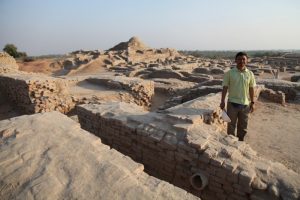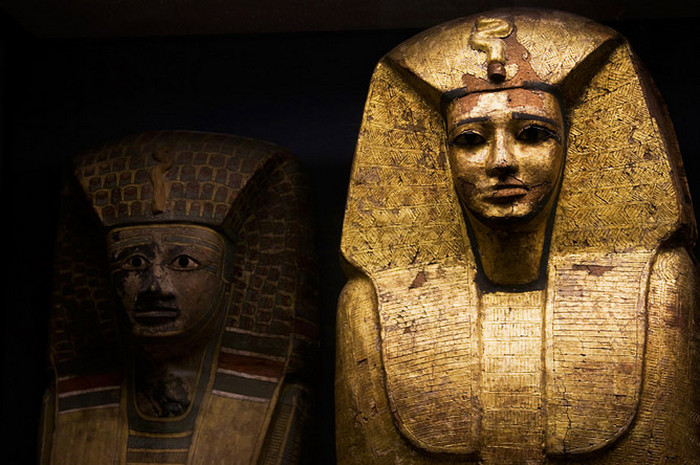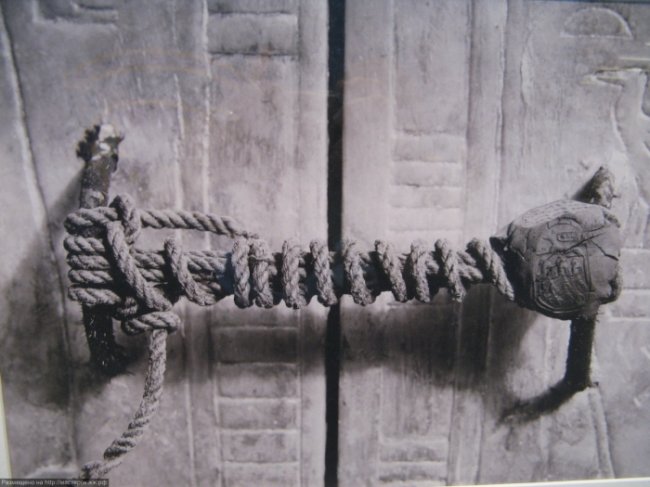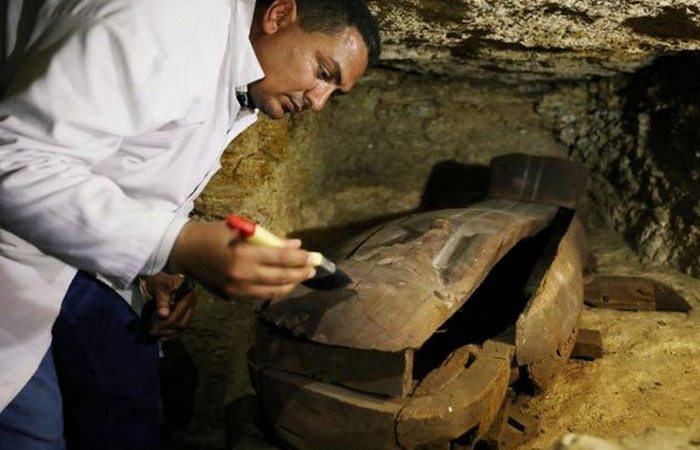The mystery of Mohenjo-Daro – the ideal ancient city, all of whose inhabitants died in a flash
 This city in the Indus Valley on the territory of modern Pakistan attracted the attention of scientists in 1922. The walls of baked bricks, the perfect layout of neighborhoods and buildings, the presence of plumbing and sewage said that in ancient times there was something great. Subsequently, it turned out that the city was built around 2600 BC. e., which means that he is a contemporary of the civilizations of ancient Egypt and Mesopotamia. However, according to archaeologists, all its inhabitants died almost instantly. Why?
This city in the Indus Valley on the territory of modern Pakistan attracted the attention of scientists in 1922. The walls of baked bricks, the perfect layout of neighborhoods and buildings, the presence of plumbing and sewage said that in ancient times there was something great. Subsequently, it turned out that the city was built around 2600 BC. e., which means that he is a contemporary of the civilizations of ancient Egypt and Mesopotamia. However, according to archaeologists, all its inhabitants died almost instantly. Why?
There were even plumbing and toilets
The ancient city of researchers gave the name of Mohenjo-Daro, which in some Indo-European languages means “Hill of the Dead.” But the cause of his death has not yet been solved.
According to archaeologists, most likely, the city was the administrative center of the Harappan civilization. Its territory (and this is 5 km in the perimeter!) Is divided into squares of the same size, which cross branched streets. The central quarter is larger in area than the rest. It is located on an artificial elevation, and there is a granary and two large meeting rooms with rows of seats.
Scientists were amazed that in such an ancient city there were running water, sewage systems and even public toilets (perhaps the oldest in the world).
Archaeologists have discovered ancient dishes, dimensional weight weights, embossed seals and numerous figures depicting animals and people in a comical way. On some objects the ancient writing is clearly visible. Judging by the size and number of buildings, at least 40-50 thousand people were supposed to live here. However, most scientists were struck by the fact that they did not find the buried remains of people or animals in Mohenjo-Daro. There are no cemeteries near the city either.
The bones of a camel, found here in 1950, turned out to be a burial place, made at a much later time – after the ancient civilization died. Found and human skeletons, but also not the era. Apparently, people later settled in the deserted city. /Photo :harappa.com
The bones of a camel, found here in 1950, turned out to be a burial place, made at a much later time – after the ancient civilization died. Found and human skeletons, but also not the era. Apparently, people later settled in the deserted city.
Traces of the slow extinction of civilization, which would indicate that the city was empty gradually, were not found either. Archaeologists have not found any weapons, nor tens of thousands of skeletons in houses and on the streets, which would confirm the version of the big bloody battle (for example, the Aryan invasion mentioned in some sources).
On the outskirts of the city, archaeologists have found some human remains (negligible for such a settlement). For example, in one house a large family was discovered, and, on the skeletons, decorations were preserved, which means they were not killed in order to rob. But in the central part of the city there were no skeletons at all. It seems that people literally wiped off the face of the Earth. And those who did not disappear instantly died.
The city was inhabited for almost 900 years and suddenly became empty. At the moment, several versions of the sudden disappearance of citizens are being advanced, but all of them are merely hypotheses.
Heavy flooding
According to this hypothesis, supported by archaeological research, the Indus River in these parts often spilled as a result of earthquakes. The layers of silt found during the excavations of Mohenjo-Daro, as well as the remains of dams built by the ancient inhabitants, indicate that the townspeople fought against the floods as much as they could and more than once restored the city after natural disasters. Perhaps the last flood caused by the shift of tectonic plates changed the course of the Indus or raised the waters of the Arabian Sea and was so strong



